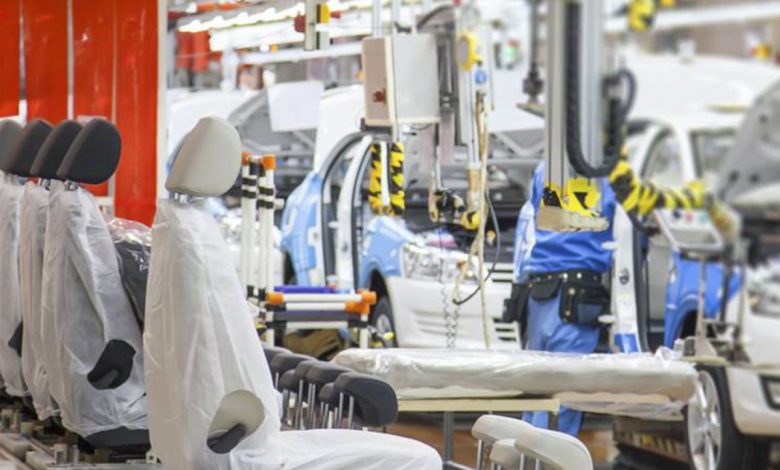Daily Current Affairs for UPSC
Industrial Policy 2022 Make in India for the world
Topic- Government Policies and Interventions [GS Paper-2]

Context- Recently, the draft – Statement on Industrial Policy 2022 Make in India for the world – has been circulated to several ministries for their views and comments.
Key Highlights of the Industrial Policy 2022
- The Policy was prepared by the Department for Promotion of Industry and Internal Trade (DPIIT), Ministry of Commerce and Industry
- Various ways for wider access to finance for the industry are such as
- Setting up of a development finance institution in order to provide finance at competitive rates
- Considering using some part of foreign exchange reserves for certain funding.
Aim of the Policy
- To address issues and challenges of industry through certain policy measures to foster and create an innovative and competitive industrial ecosystem in the country.
Objectives:
- To focus on competitiveness and capability;
- Economic integration and to move up the global value chain;
- To promote India as an attractive investment destination;
- To nurture innovation and entrepreneurship; and
- To achieve global scale, and standards.
Made in India brand:
- It could serve as a platform for manufacturers to demonstrate local value addition which can enhance the country’s credibility as a source of quality products.
- The scheme is making finance accessible to industry and for marketing the Made in India brand.
Evolution of India’s Industrial Policy
- The quest for industrial development started just after independence in 1947.
- It will be the third industrial policy after the first in 1956 and the second in 1991.
- The new policy is likely to replace the industrial policy of 1991 which was prepared against the backdrop of the balance of payment crisis.
- The Industrial Policy Resolution of 1948 defined the broad contours of the policy delineating the role of the State in industrial development both as an entrepreneur as well as an authority.
- Further this was followed by comprehensive enactment of Industries (Development & Regulation) Act, 1951 (referred as IDR Act) that provides for the necessary framework for implementing the Industrial Policy and enables the Union Government to direct investment into desired channels of industrial activity inter alia through the mechanism of licensing keeping with national development objectives and goals.
- Economic reforms initiated since 1991 envisages a comparatively bigger role for private initiatives.
Issues
- The significant role of industrial policy has been consistently downplayed in developing countries outside of East Asia ever since the early 1980s after the growing dominance of the orthodox paradigm with well-known consequences in much of India, Latin America and also sub-Saharan Africa.
- The Industrial policies are more focused on large firms and many of the industries currently chosen to be under PLI (production linked incentives) are highly capital- and skill-intensive.
- Even in Japan and South Korea, where industrial policy has been successful, it has often mainly helped large firms.
- In a world of geo-political conflicts and supply chain disruptions, national security is considered a major goal.
- Therefore sometimes resources are less allotted to the industrial sector.
- Indian politicians and bureaucracy are also more comfortable with “top-down” over-centralised policies.
- The government had failed to instill confidence even as its policies till now had crippled the construction, manufacturing, real estate, pharma and other large contributors to the economy.
- Lakhs of workers have lost job opportunities due to the retrogressive policies.
- The role of industrial policy is not only to prevent coordination failures but also to avoid competing investments in such a capital-scarce environment.
- Excess capacity further leads to price wars, adversely affecting profits of firms — either leading to bankruptcy of firms or slowing down investment, both happening often in India (witness the aviation sector)
- Other issues include Imperfect information with respect to firm-level investments in learning and training; and lack of information and coordination between technologically interdependent investments.
- Industry’s inadequate expenditure on research and development (R&D) and micro, the small and medium enterprises sector are facing tough competition from cheap imports from China and other countries.
- Lack of human capital has been a huge constraint upon India historically being able to attract foreign investment (which Southeast Asian economies succeeded in attracting).
Way Forward
- The implementation of an integrated investment promotion strategy by involving district, state, national and international market synergies is required.
- Providing performance-based loans and incentives for innovation and green growth should be ensured.
- Leveraging fintech and encouraging MSMEs in order to choose the corporate bond market.
- Intellectual property rights must be accepted as collaterals for loans.
- Rolling out social security schemes for women workers, and inclusion of labour-intensive industries under the production-linked incentive scheme can help deal with the adverse effects.
- Supply chain financing must be enabled.
- Microfinance institutions should be encouraged in order to form cooperative groups and finance micro-enterprises at affordable rates.
- Incentivising public procurement to promote Make in India, creating a national digital grid, developing a robust data protection regime, setting up of a technology fund, and creating a task force in order to continuously identify skill gaps.
- On nurturing innovation, the creation of innovation zones at the level of urban local bodies and the formulation of a national capacity development program must be done.





.png)



